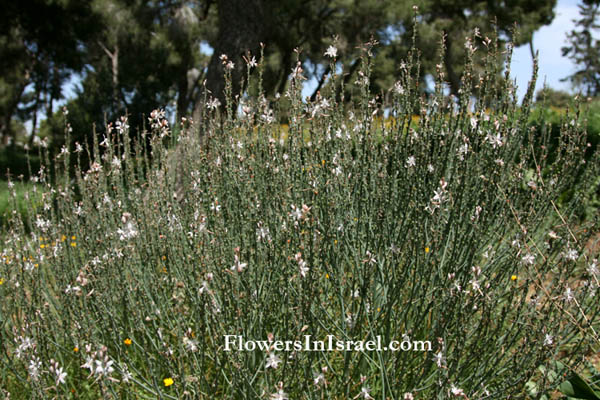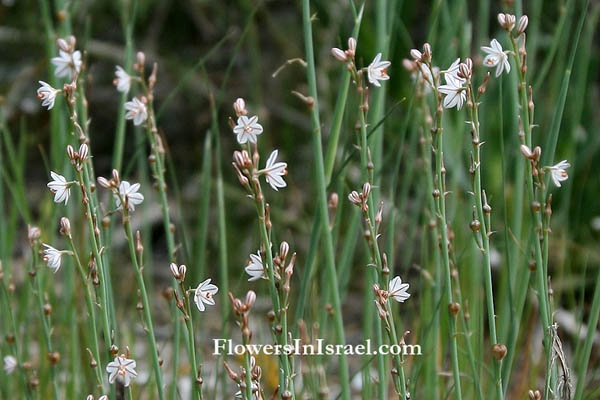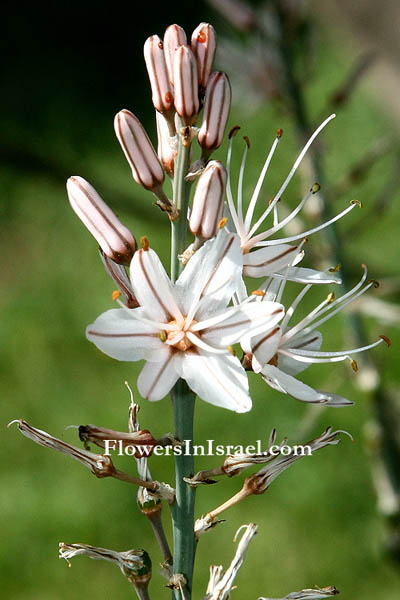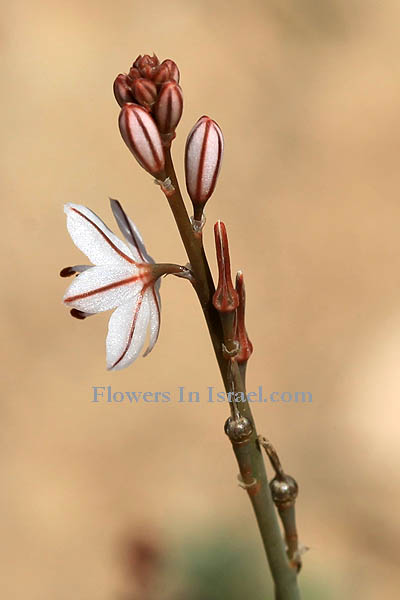Hebrew: עירית צרת-עלים, Arabic: البروَق نحيف الأوراق
| Scientific name: | Asphodelus tenuifolius Cav. | |
| Common name: | Narrow-leaved Asphodel | |
| Hebrew name: | עירית צרת-עלים | |
| Arabic name: | البروَق نحيف الأوراق | |
| Family: | Liliaceae, שושניים |

|
| Life form: | Annual | |
| Stems: | Erect, glabrous, leafless stems, often branched above | |
| Leaves: | Rosette, entire | |
| Flowers: | White with pink | |
| Fruits / pods: | Nearly globose capsule about 3 mm in diameter | |
| Flowering Period: | February, March, April | |
| Habitat: | Shrub-steppes, Desert | |
| Distribution: | Mediterranean Woodlands and Shrublands, Semi-steppe shrublands, Shrub-steppes, Deserts and extreme deserts | |
| Chorotype: | Saharo-Arabian - Sudanian | |
| Summer shedding: | Ephemeral |

Derivation of the botanical name: Asphodelus, ασφοδελοϛ, Greek name for this plant. Asphodel means the unsurpassed. The English word “daffodil” is a perversion of “asphodel,” formerly written “affodil.” Some philologists suggest that de name daffodil arose from the Dutch de affodil. tenuifolius, tenuis, "thin, fine, slim, slender"; folius, leaf; slender leaved. The Hebrew word: עירית, irit is mentioned in the Tosefta, Shevi'it, 5:17 *Chazal literature, as fodder for domestic animals.


|